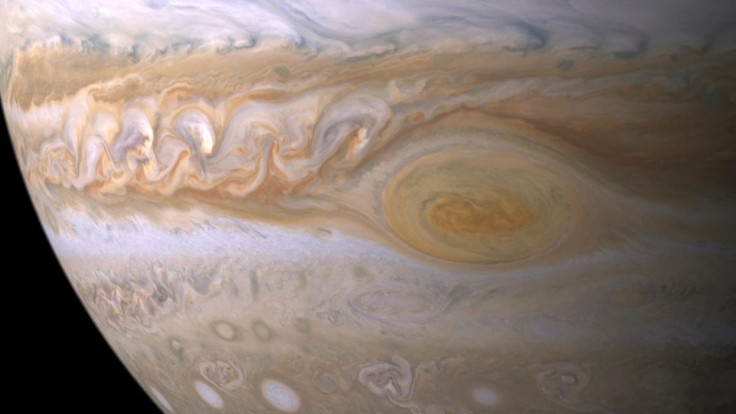Stunning Jupiter Photo Shows 'Baby Red Spot' In Colorful Swirling Clouds Captured By NASA

Jupiter's Great Red Spot is one of the gas giant's most famous features, but there are actually two smaller vortexes swirling next to it.
On the official Twitter page of the NASA/ESA Hubble Space Telescope, the U.S. space agency brought back a stunning image of Jupiter captured by the probe back in May 2008. The colorized image showed the planet's massive Great Red Spot (GRS) and the less prominent "Red Spot Jr." next to it.
The Hubble photo also reveals a "Baby Red Spot" next to the two previously discovered storms. According to NASA's description of the image, the third red spot first popped up in 2008. It has a paler color than the Great Red Spot after it got caught up in the larger storm's anticyclonic spin.
#HubbleClassic #OTD in 2008, Hubble observed a third red spot alongside Jupiter's famous Great Red Spot and the smaller Red Spot Jr. in the giant planet's turbulent atmosphere: https://t.co/I7g8Q9UHlh pic.twitter.com/qBDP5djpD7
— Hubble (@NASAHubble) May 22, 2019
According to a July 2008 report on the Hubble website, astronomers suggested that the Baby Red Spot may have met its end after observing three Jupiter images obtained by the Hubble’s Wide Field Planetary Camera 2 between May 15 to July 8, 2008.
Located in the same latitudinal band as the Great Red Spot, the Baby Red Spot could not avoid moving closer to the bigger storm and losing its power to the GRS, which has been maintaining its own spin for over 150 years by "eating up" other storms. The third image taken of Jupiter in July 2008 showed that the Baby Red Spot has lost its red color and now appeared deformed after having been flung to the right (east) of the GRS from its initial place on the left (west).
It was predicted that the Baby Red Spot will eventually be completely absorbed by the GRS and cease to exist.
Meanwhile, Jupiter's Red Spot Jr., which is also known as Oval BA, made an appearance for the first time two years prior in 2006, after a former white storm became red. The storm grew to its current size due to the merging of three smaller ones back in 2000.
By the time this image was taken, the smaller vortex had succeeded twice in passing by the more powerful Great Red Spot without getting caught up in its force.
Earlier this year, NASA's Juno spacecraft released a new image of Jupiter showing a stunning close-up view of the Great Red Spot and Oval BA. The color-enhanced mosaic, which was created using three images the JunoCam took on Dec. 21, showed that Red Spot Jr. had completely lost its reddish color, turning into a white vortex.
Two massive storms in #Jupiter’s turbulent southern hemisphere appear in this new image captured during my latest flyby of the planet https://t.co/GamniM3lQ3 pic.twitter.com/DhHYzhHZ8t
— NASA's Juno Mission (@NASAJuno) January 17, 2019
According to a statement, the Oval BA had become deformed and slowly turned white over the past few years like the Baby Red Spot.
© Copyright IBTimes 2024. All rights reserved.





















